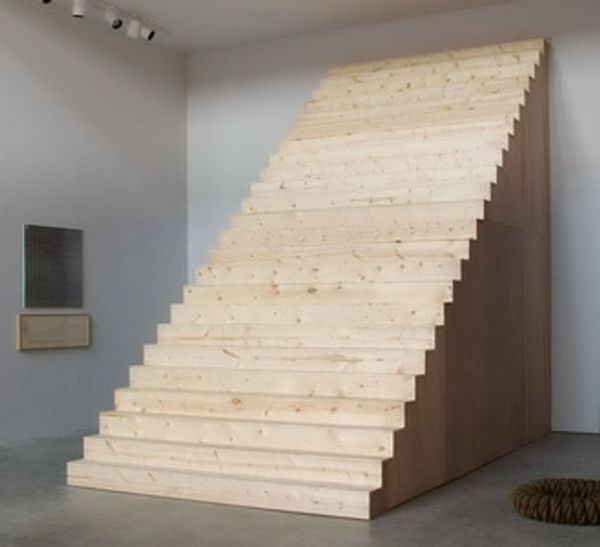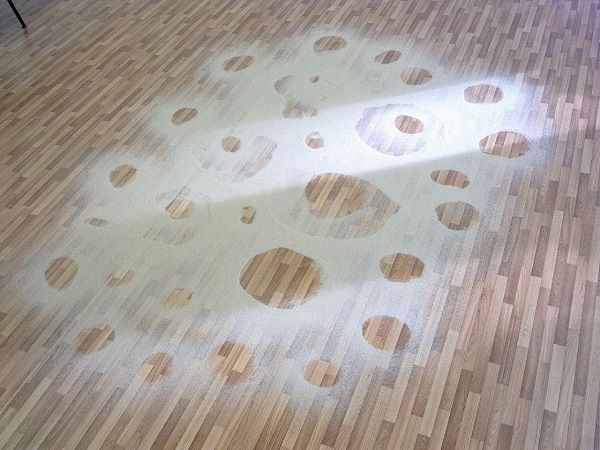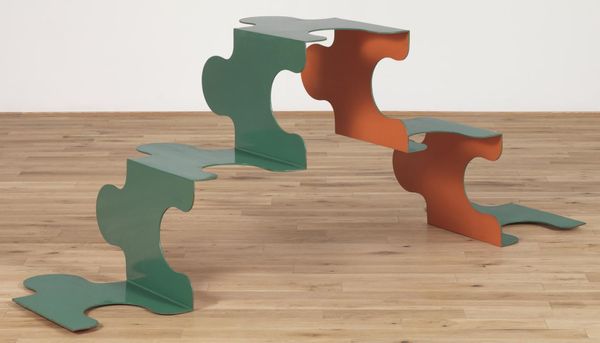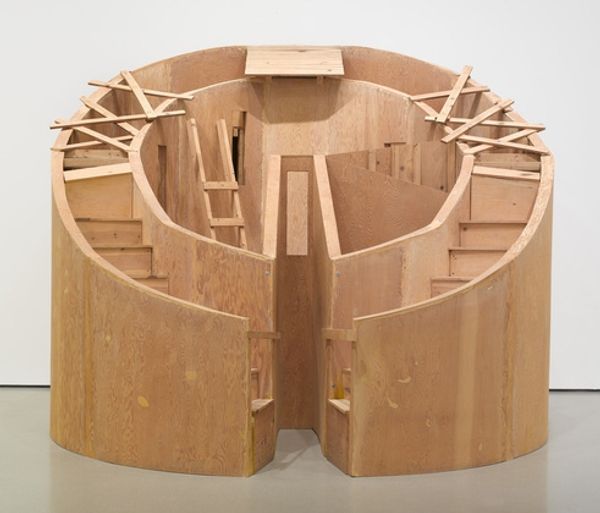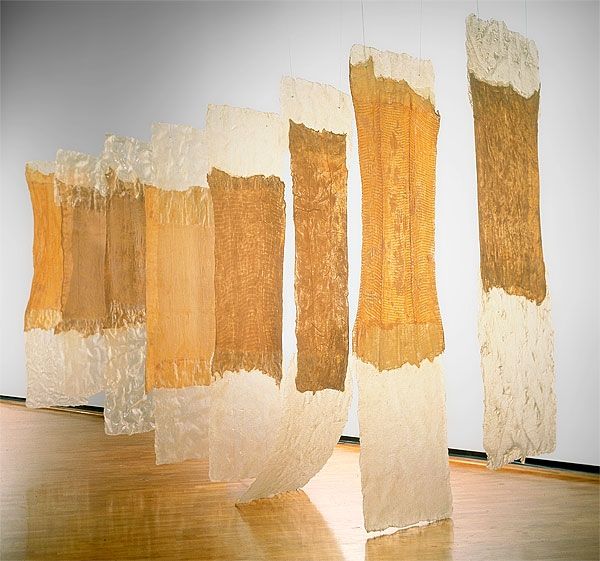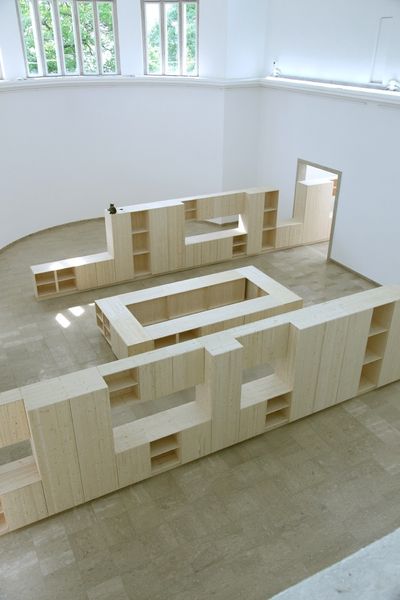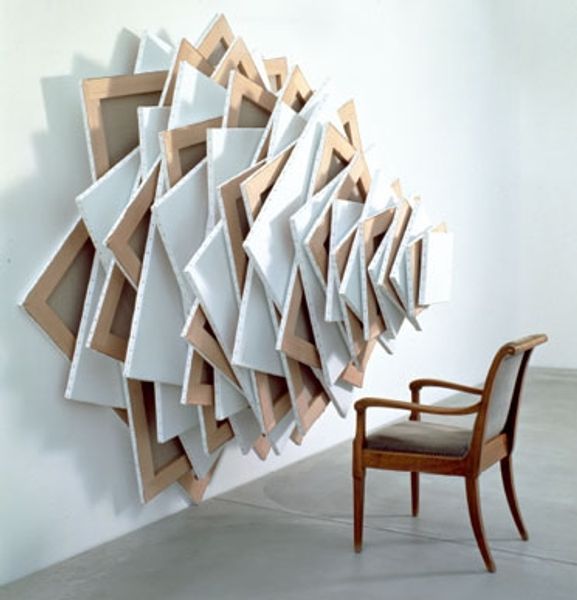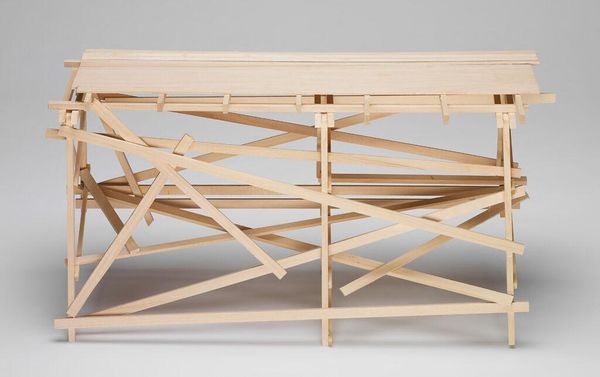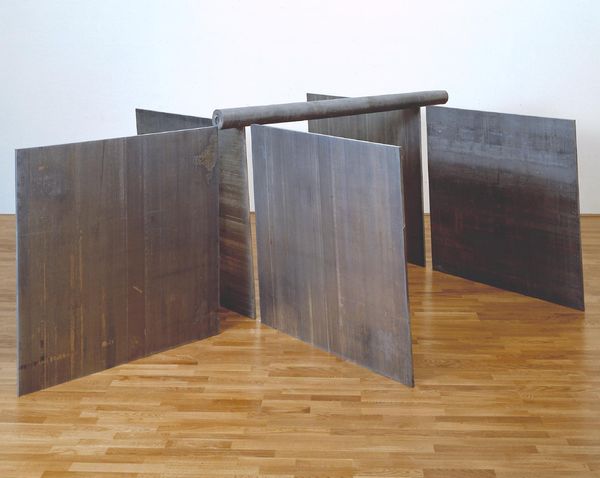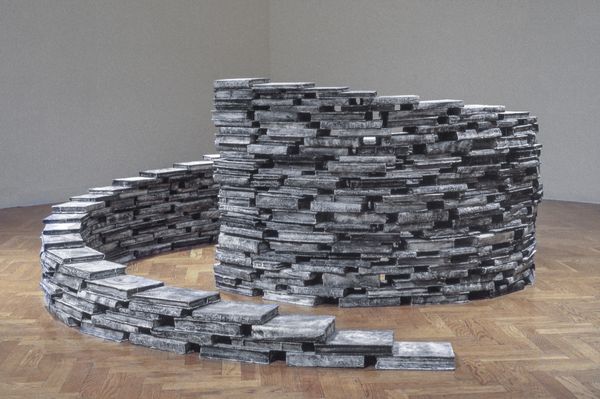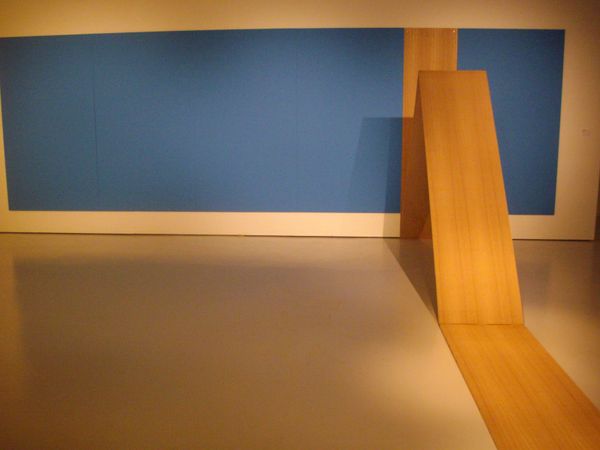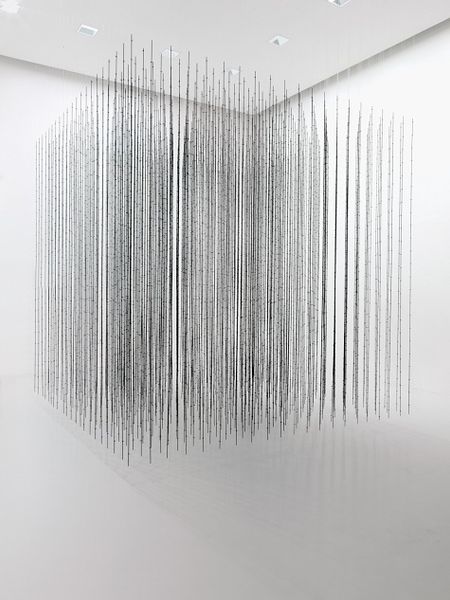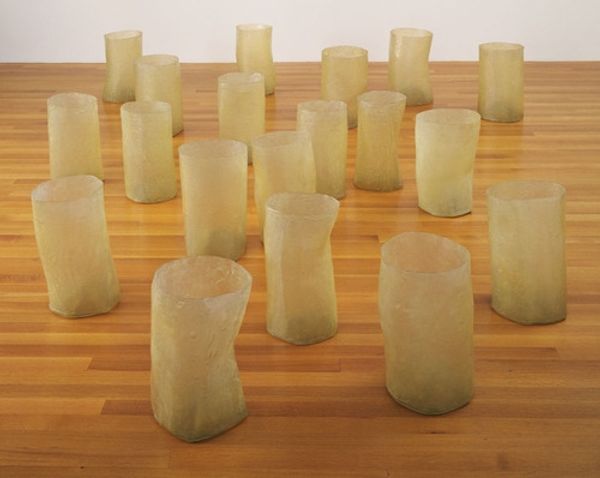
Copyright: Maya Lin,Fair Use
Editor: We're looking at Maya Lin's "Blue Lake Pass" from 2006, a wood sculpture and installation. It reminds me of topographic maps, but in a tangible, almost miniature mountain range kind of way. What should viewers take away from Lin’s geometric, yet nature-based sculpture? Curator: It’s interesting that you immediately connected it to topographic maps. I think Lin, particularly with her background in architecture, invites us to consider how we represent and interact with landscapes. The piece exists within a broader conversation about environmentalism and the politics of land. Consider the history of mapping, often used as a tool for claiming and controlling territory. Does Lin’s choice of such a controlled medium such as wood challenge that, and if so how? Editor: I never thought of it in terms of land control! The rigid wood makes me consider industrial impact of land development. Curator: Exactly! Lin’s work frequently explores the tension between nature and culture, raising critical questions about our relationship to the environment. Given increasing deforestation and debates on sustainability and who it impacts most, where would you situate this piece within these conversations? How does a piece like "Blue Lake Pass" potentially advocate for ecological awareness, or invite consideration for those whose landscapes are directly being exploited or impacted? Editor: Wow. I hadn’t considered that, but viewing it with environmental impact and indigenous rights, changes how I feel about this piece. Curator: That tension is crucial. Lin’s work challenges us to engage in these essential discussions on art, ecological awareness, and ethical responsibilities. It’s not just about what the work *is*, but what conversations it ignites. Editor: Thank you for clarifying this work. It helps give context for environmental discourse.
Comments
No comments
Be the first to comment and join the conversation on the ultimate creative platform.
